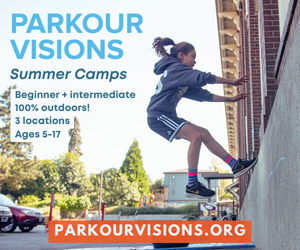Shots are hard. They can be scary and overwhelming for our kids and us. And yet, we wouldn’t do it if they weren’t incredibly important.
So, how can we make your child’s next doctor’s appointment easier for everyone?
Preparation
Be honest.
Don’t lie to them or try to hide that they are getting a shot at their appointment. Hiding it from them only erodes trust between you and your kids and can activate a stronger fear reaction in the room. Knowing can give you and your little one time to talk about the experience, make space to move through some of their fear, and practice what’s called cognitive rehearsal, where your child visualizes themselves getting their vaccine and rehearses the experience employing different coping techniques and tools to visualize themselves going through it with less anxiety. And, if you aren’t sure if they will be due for a vaccine at their next appointment, you can always call or message the clinic and ask.
Be mindful of the language you use.
Some words elicit different responses in our bodies. Being mindful about the words you use to describe this experience can have a significant impact on how they prepare for and even code the experience after it happens. Instead of using words like “painful” or “hurt”, try using words like “pinch,” “a little pressure,” or a “poke.”
Consider the location
When Everly was 18 months old, we had a temporary insurance change that resulted in her having to go to a different clinic for her well-child check-up. It was a family medicine clinic and while, yes, family medicine doctors are perfectly equipped to see your child at their well-child visit, the setting is very different. The place felt sterile, which was a stark change from the vibrant colors and decor at her pediatrician’s office. And because they do not specialize in children, some of the tools that can be used to reduce and distract from pain (see below) were unavailable. That made a huge difference in how Everly went into the appointment.
Don’t apologize.
Remember the reason you are doing this and explain it to them. You can validate and make space for their fear or pain while not dismissing the importance of this. Instead of saying, “I’m sorry we have to do this today” try saying, “I know it can feel scary to get your flu shot. Sometimes I get scared, too. We get vaccines to help our body build up an immune response to fight off hurtful bugs and viruses that can make us really sick. You are so strong.”
Find ways to expose them to the idea of vaccines and medicine outside of their appointment.
Take them with you to see you getting a vaccine. Get a doctor kit and practice giving vaccines to each other or their stuffed animals. Employ the support of your little one’s favorite shows and characters. For example, Sesame Street made a lot of videos talking about different characters getting their COVID-19 vaccines and even have a full page with resources for kids and their caregivers. And they can watch Daniel the Tiger talk about how he prepares to go to the doctor, too.
At the appointment
Your reaction matters.
If you are anxious, they will be too. Your mood has a much more significant effect on your little one than you want to believe. There was a time I wasn’t tasking Everly to her doctor’s appointments because my anxiety about her being in pain was having a negative effect on how she was feeling in the room. I had to work on being okay with the fact that she may feel sad and scared and remind myself why we made the decision to vaccinate our child. I was honest with Everly that I don’t like to see her upset but also talked about how awesome it is to be brave enough to do something that we know is important, even when it feels a little scary.
Employ pain management support.
There are a variety of different supports that can help make the physical experience more comfortable, including:
- “Buzzy Bee” is a super cool little bee that distracts the nerves in the area just above where a shot will be administered and stops pain signals from making their way to the area. Some even have a little ice pack on them, which also helps numb the area. This is used at the time the vaccine is administered.
- Cold spray is exactly what it sounds like. It’s a really cold spray you apply to the area before getting a vaccine to numb the skin. There are also creams that can be used but they need more time to work — sometimes as much as 30 minutes — before the shot is given. One note I will make is that the cold can be jarring depending on your child’s sensitivity level. It’s also a little harder for younger kids because they might think the spray is the vaccine so panic can set in then, as well.
Distraction can be really powerful
Some kids respond well to having a comfort toy or animal to hold while they are with you. Comfort items are incredibly powerful and are an excellent way for them to use their self-soothing/coping skill.
They might also like having music — you could even consider making them their own playlist — or watching something on your phone. While this helps, I think it can often be more for you to manage and subconsciously make it more anxiety-provoking. The reality is, the shot itself takes less than 5 seconds so just consider what tools you use and if it ends up being more to manage and might cause frustration for you and your child on top of anxiety which might render the support useless.
Consider their position.
Depending on their age, there are different ways you can sit with and comfort your child. Everly, being 2.5, sits on my lap, facing me so I can hug her in really tight and help hold her leg still. One thing to note, regardless of age, is that sitting up or being in more of an upright position is preferable as lying down is a much more vulnerable position to be in and can trigger more of a panic response.
Use your breath.
While we all know breathing is an incredibly powerful tool, we can often forget it in times of high stress. Practicing deep breathing outside of stressful situations is one of the best things we can do with our kids as their breath can help them through all sorts of challenging situations. In this case, deep breaths can help activate the parasympathetic nervous system and lessen the stress response in the brain. You may even bring a distraction tool to help with this such as a pinwheel, sensory jar or oils such as lavender, or bubbles.
Another powerful thing you can do with this is use the power of progressive muscle relaxation or the act of tensing and releasing the muscles as a way to relax your system. Tense muscles will make the vaccine more painful so this technique can help them reduce their pain and help them feel less calm. If they have difficulty understanding how to engage with the process, try bringing a stress ball with you and having them take a deep breath, squeeze the ball for 3-5 seconds then breathe out and release.
Don’t dawdle.
Be direct and intentional. Everly is inevitably going to start crying as soon as we sit her on my lap. And, she isn’t going to stop crying until after the shot is done. Trying to soothe her or lessen that feeling is only prolonging the inevitable. Be compassionate and loving, yet deliberate. Work with the medical provider to be intentional with your actions and then give yourself plenty of time after the vaccine to soothe and celebrate.
After the Vaccine
Leverage the power of positive affirmation.
Build them up. Be their ultimate hype person and celebrate how awesome it was they got their vaccine. One note I will make — which may be the biggest takeaway I hope you get from this article — is to NEVER qualify their bravery or the experience by whether or not they cry. Crying is not a bad thing. It does not distinguish them as more or less brave or strong. Crying is a normal human experience and a release of emotions. The celebration is in getting their shot, not how they felt about it.
Celebrate them with a little extra something.
It doesn’t have to be a toy or prize. Perhaps it’s a sticker from the from desk or getting to pick the music in the car on the way home. Maybe you packed their favorite snack — or better yet, they got to pack their favorite snack — to have after it’s all done. We have started a tradition of taking videos to show off our muscles (i.e. how strong and brave Everly is) while we have a snack. If we can make it work in our schedule, I try to plan something fun for afterward too such as a park trip.
Recount the experience.
Have them walk through the experience again and talk about what they felt, what helped, what didn’t and especially, if it was scary, painful or both and if so, how it felt. This will help you get a feel for how they are integrating that experience in their brain, give you ideas for how you can support them next time, and hopefully, as is the case for many kids, when they tell you the story again and reflect on how it wasn’t as bad as they thought, their brain will be able to hold onto that for next time.
Of course, there may be some pain or symptoms that present after the vaccine. Talk to your medical provider about what to watch for and ways they recommend supporting them through the vaccine.
We are all just trying to do right by our kids and it’s hard when that means making a choice that is painful and scary. Remind yourself you are not a bad caregiver. They — and you — can do hard things.


















